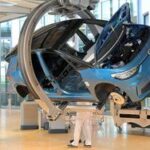
Voyager 1, the farthest and longest-operating spacecraft, has been returning data after six months of inactivity.
NASA announced that Voyager 1, located approximately 14.9 billion miles from Earth, began transmitting data to Earth as of the 13th.
Launched in September 1977 for interstellar space research, Voyager 1 traveled past Jupiter and Saturn to reach 14.9 billion miles from Earth. Its twin spacecraft, Voyager 2, also traveled 12.4 billion miles, passing Uranus and Neptune. Voyager 1 started malfunctioning on November 14 of last year.
Instead of sending binary codes of 0s and 1s, it began transmitting unreadable data back to Earth, equivalent to a human losing their language abilities.


Launched over 46 years ago, NASA couldn’t simply give up on Voyager 1 and initiated a remote repair.
During the repair, they discovered that one of the three computers, the Flight Data Subsystem (FDS), was the main source of the problem. Specifically, the single memory chip responsible for sorting data was defective. NASA resolved the issue by placing the software (SW) code of the problematic chip elsewhere, as collecting data and receiving commands from Earth were functioning properly.
Voyager 1 has four instruments. Two of these devices started working immediately when the repair process began. The remaining two started to send data recently, and the spacecraft resumed its normal operations after seven months. Since 2012, Voyager 1 has been exploring interstellar space after leaving the solar system. Due to its long distance from Earth, physical repairs are impossible for the Voyager 1 and Voyager 2.
The Voyager spacecraft is powered by a nuclear battery that converts the heat of plutonium into electricity, also known as a Radioisotope Thermoelectric Generator (RTG). However, the battery has been producing less electricity each year and is almost depleted now.
To continue the operation, Voyager 2 plans to turn off one of its five devices in 2026. Voyager 1 originally had five devices but one broke down early in the mission.
Even with these measures, the batteries will expire soon. NASA estimates that Voyager 1’s operations could cease as early as next year, or at the latest by 2030.















Most Commented